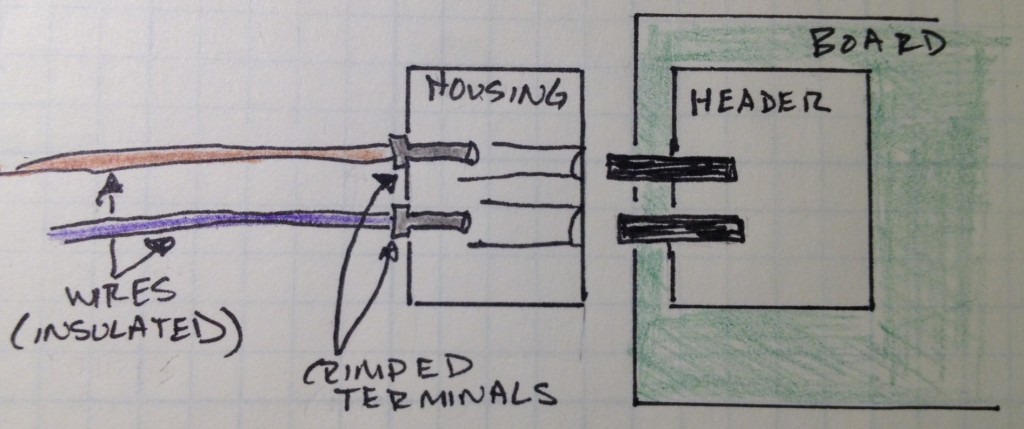Having a project made me quit playing with my Electric Imp and start getting to work with it. The Squirrel language taunted me for awhile but, happily, I got some help from Matt, my podcast guest, and things went well after that.
Now, when I set a color (RGB) value to a webpage, it sends the data to electric imp’s servers which sends the data to my board and, poof, the widget turns the right color.
Here is how that webpage looks:
Ummm… yeah. Maybe not so beautiful. I’ve made many websites. But I haven’t done any in years so I don’t know where to start. Asking Google leads to a multitude of slightly terrifying, scammy results. Logical Elegance was done in a mac-based program by Christopher. I think it is beautiful but overkill for what I want. If someone asked me how a non-tech person should make a website, I’d point them to squarespace (which I use for the podcast site).
But I don’t want a website, I want just a page. Then when you want people to (wink? tap? ping?) your light, you email them the page and they use that. I don’t want to host yet another website. And since I don’t need to, a standalone page makes sense.
I suppose I want the page to be pretty simple. I don’t think people should put in the color, they should put in their name (use a cookie to save it). The name should transmogrify to a color automatically, though the user should be able to choose another color if they want (probably from a color wheel, [note: another cookie]).
So I’ll sketch this out on paper (storyboarding is critical) and then I’ll find a tool. Maybe I’ll do it in squarespace for the easy editing and then look at the html to help me figure it out. Or maybe I’ll use my Safari Online to find a relevant book.
But there is more. Once the webpage is unutterably lovely, what happens next?
I think I want to build a small number of these. Let’s say one to five. I’m using off the shelf parts and do not want to spin a board myself. This is a craft project. I’m putting a bit of work in to make it cute but then I’ll be done. Like a scarf.
Though I’ve wandered away from a scarf because, hey, I don’t know how to knit. Also, it needs to connect to one WiFi to get the info, a scarf moves around too much.
In thinking about how to package it, I started wondering about making it a hanging ornament. And I started wondering how to sell it. Happily, the answer came from the same place: in a jar on Etsy. (I was searching for Etsy and electronics to see if they have a no-electronics policy: nope.)
I know Etsy isn’t where you think of when selling or buying electronic products. But if I think about this a a hobby/craft project, it makes sense. I’d be quite happy to recoup my losses, I don’t need to make money on this. I wonder how much I’d need to sell it for. Hmmm…
- Electric Imp: $25
- Electric Imp breakout board (April): $10
- BlinkM I2C LED: $13 (though this could be replaced with a $2 LED)
- Battery solution: I think that something like this will work so say $15 + $8 for the battery.
Then I’d need a jar ($2) and I’d need to cut a hole for a mini-USB header (for charging the battery) and one showing the edge of the Electric Imp (needed to program its WiFi). I might add some plastic baffle-bits so you didn’t see the electronics, only the warm glow of the LED. Though, maybe I’d leave it looking techy, depends on if it looks nice. Total that all up, I’d need to charge $75 to clear my costs (assuming the expensive LED).
(Mental note: widget should blink white once every hour when the battery starts to get low. Or maybe the Electric Imp agent should email the owner to let them know.)
I guess the website and the battery are the two big tasks left to do. The battery has me a little worried; it doesn’t seem like there are any LEGO-like blocks to put together that will work. I woke up thinking about that and how someone should already have made such a board. But all the ones I found aren’t quite the right voltage for an Imp.
Anyway, I’m not there yet. No need to borrow against future problems. I can play in the space of getting things done and dreaming about solutions.


